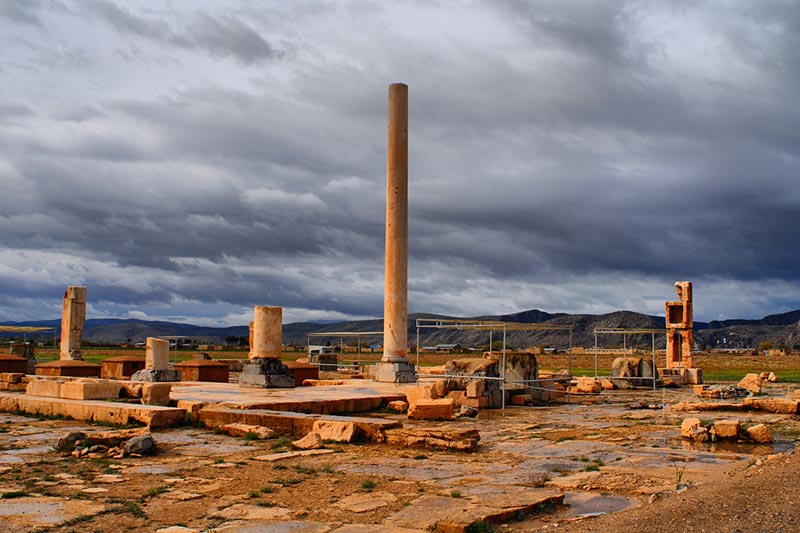
Audience Palace
Known for many years as the location of the only and oldest surviving intact column at Pasargadae and throughout Iran, having more than 2550 years old, Palace S (Herzfeld’s “Palast mit der Saule”) was undeniably built to serve as the principal public palace for Cyrus and his court in a very distinctive island -like location surrounded by the permanent stream supplied from a not too far river, Pulvar.

Pasargadae
The earliest known major settlement of the Persians is the grand capital and the last resting place of Cyrus the Great (559-530 BC), located 40 km to the northeast of Persepolis in the fertile and well-irrigated land of Dasht-e Murghab, with the elevation of 1900 meters above the sea level. Although all that survived of the building are the stone foundations and some bases of columns, the upper parts of the walls must have been formed of mud-brick, possibly positioned in the manner of the Gate of Xerxes.

Tomb of Cyrus the Great
“O man, I am Cyrus, who founded the Empire of the Persians, and am the king of Asia, do not feel exasperation or jealousy against me or this monument” The tomb of Cyrus the Great is the only monument at Pasargadae that is described by the Greek historians and later by the travelers. Strabo, contemporary with the Christ, following Aristobulus the Alexander officer, described the tomb of Cyrus the Great as follows:
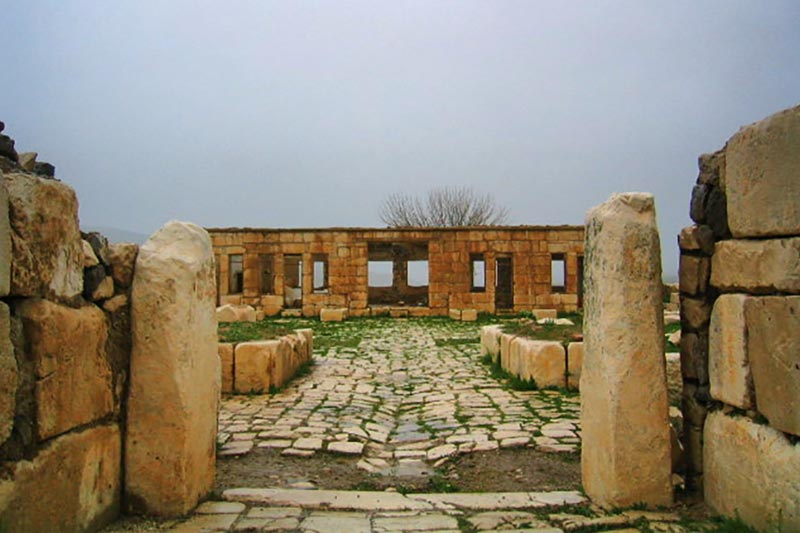
Carvansarai Mozaffari
Located about 100 m north of the tomb of Cyrus, is the Mozaffari caravanserai or hostel. It was made of the transported stones from the Achaemenid monuments of Pasargadae. The plan is a square 45.20 x 40.30 m. A series of rooms are organized around a court of 18.50 x 16.50. The monument was built under Shah Shoj'a (1358-1374 A.D.), one of the famous rulers of the Mozaffari dynasty in Fars, who was one of the patrons and supporters of the celebrated Iranian poet, Hafez.
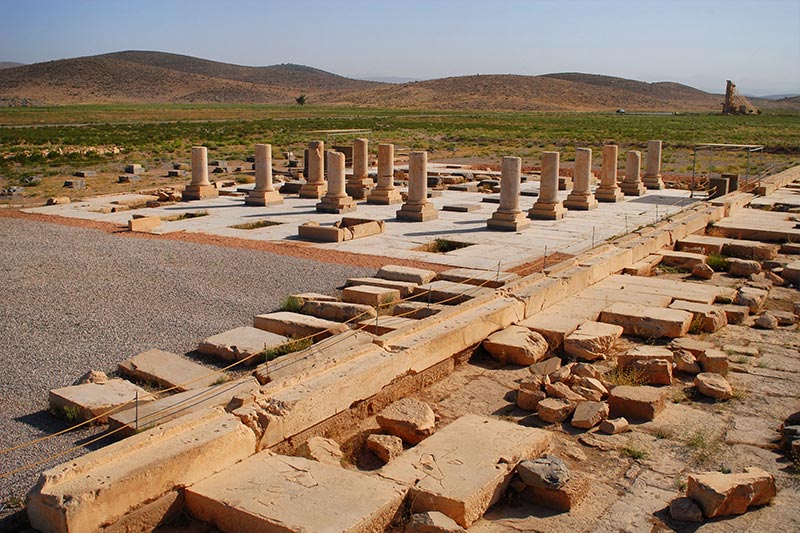
Private Palace
Marked for its one surviving column or pier, the Private Palace has a similar plan to that of the Audience Palace with a central columned hall sliced open by stone doorways in all four walls, although just the west and east (the right and left hand) sides were fronted by porticoes. The columns in the hall of the Private Palace, each supported by exceptionally finely-made, horizontally- fluted torus on black and white plinths, are smaller but more numerous than those of the Palace P.
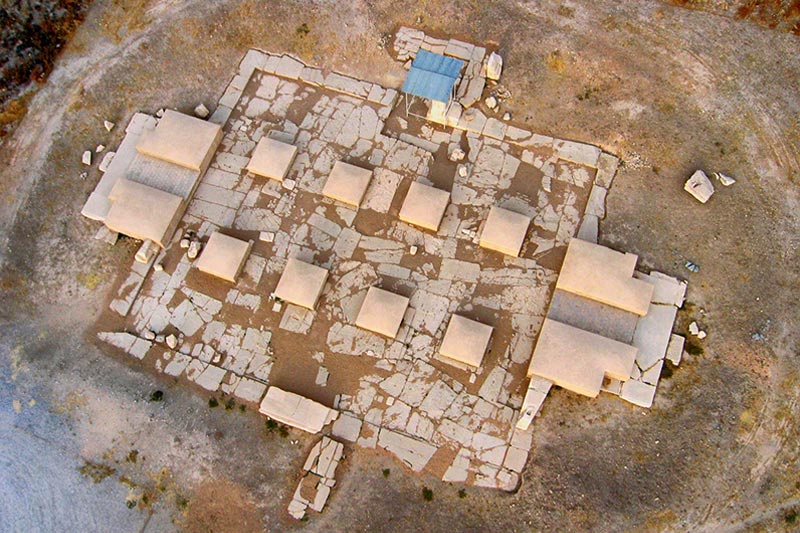
Gate Palace
Located at the eastern edge of the palace vicinity, Gate R (Herzfeld’s Palace R or Palace with the Relief) is the earliest known example of a freestanding monumental gateway. It may well have served as the inspiration for the famous Gate of Xerxes or the Gate of All Nations at Persepolis. Here, the gate consists of a rectangular columned hall (26.40 m x 22.60 m in size) pierced by two opposite monumental doorways on its long axis and by two side doorways on its cross axis.
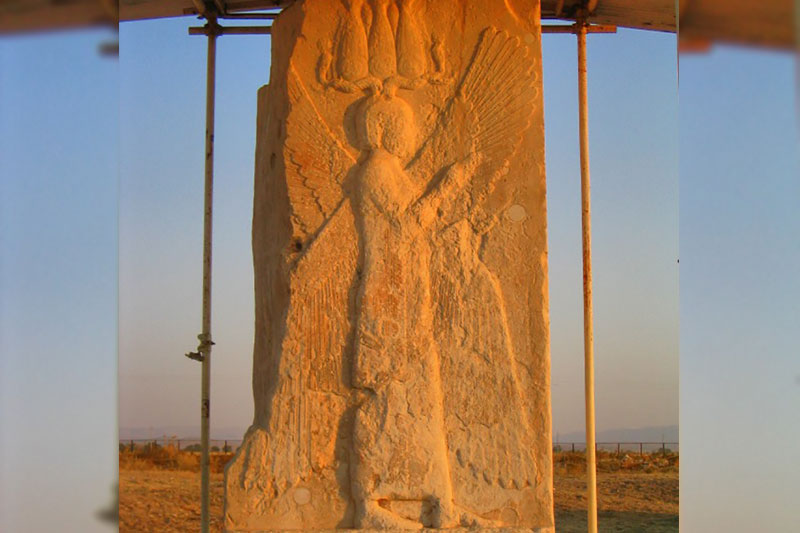
The Winged Figure
The two main doorways leading into and out of Gate R were originally flanked by monumental winged bulls that were closely copied from the lamassu as divine guardians that had once provided divine protection to the gates and doorways of Neo-Assyrian palaces. While they are no longer represented by anything but stone fragments, the many pieces of sculptured hairs and the part of a crown found by Herzfeld in this area, indicate that the bulls of the inner door were human-headed.
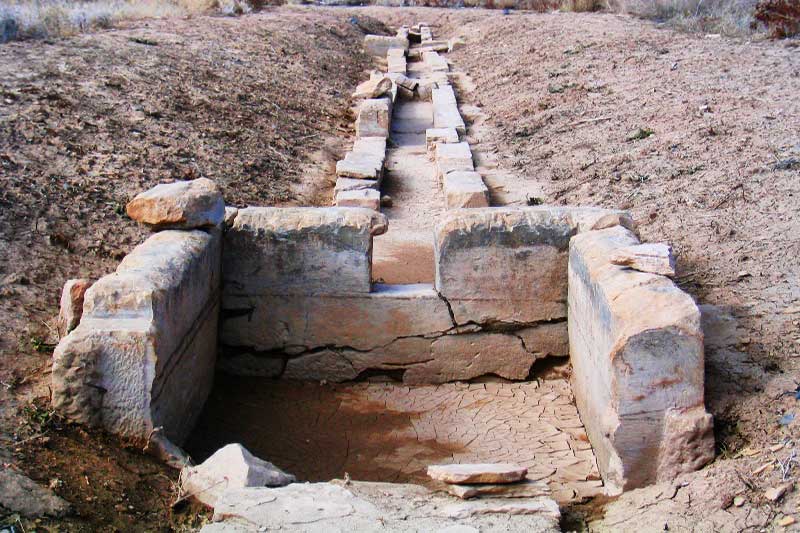
Royal Paradise
For the ancient Persians, the symbol of eternal life was a tree with a stream at its roots. The sacred miracle tree contained the seeds of all within itself. The garden at Pasargadae appears to document the first known occurrence of the chahārbāḡ or the famous traditional Persian fourfold garden, a specific articulation of space that went on to become a characteristic mark of later garden design, not only in Iran but even far beyond the bounds of Western Asia.
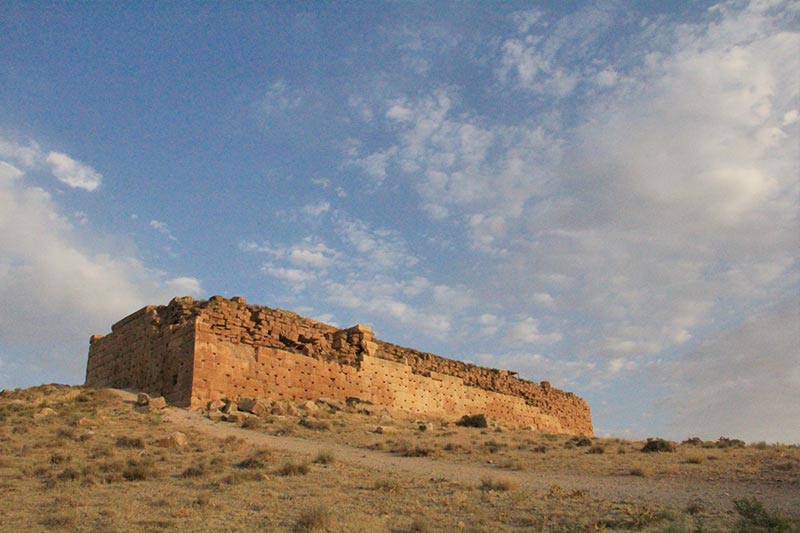
Tall-e Takht Fortification
The great stone platform on the western slope of the natural hill of Tall-e Takht with 80 m. length and 15 m. height has been made up of some 20 layers of huge stone slabs having up to six tons weight. The Throne hill was almost certainly intended to serve as a platform for further impressive construction; and this never-finished project might have partly provided an inspiration for the later, elevated palatial compound at Persepolis.
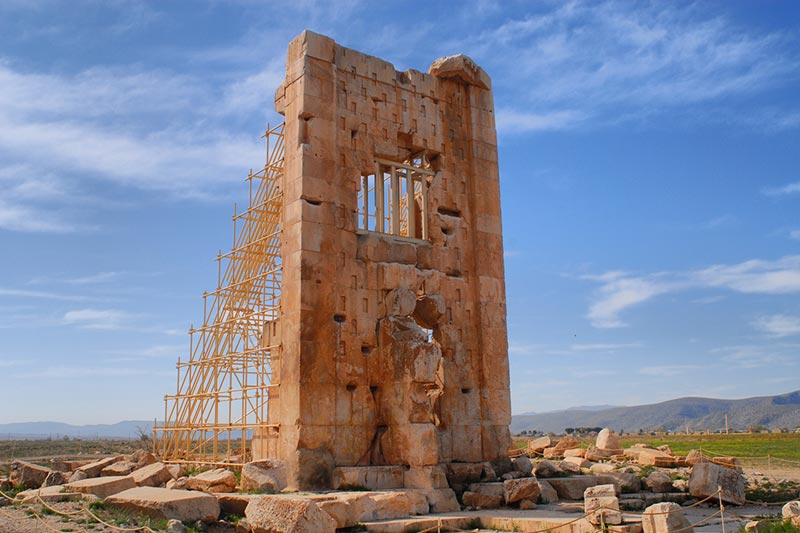
Stone Tower
Not far to the north of the palace area, a fourteen-meter-high tower still boasts a more or less intact entrance façade. The tower was built almost exclusively by finely cut slabs of white limestone with the striking exception of three rows of windows that are in dark limestone. The location of the windows is visibly not related to the interior plan of the building, which was a single room raised above almost eight meters of solid masonry.
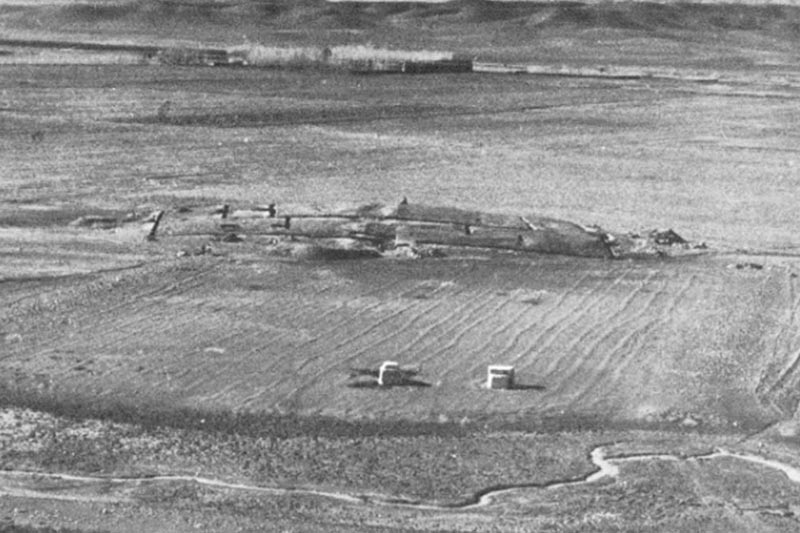
Sacred Precint
The most northerly part on the Pasargadae site, some 2400 meter to the north of Cyrus the Great tomb, is an area known as worship or sacred precinct that is marked by the existence of two stone plinths that stand some nine meters apart. Set up on a sizeable stone foundation that reaches up over two meters in height, the plinths were constructed in white limestone and each rose from low-level black limestone borders that provided a characteristic dichromatic effect.

Tall-e Takht Fortification
The great stone platform on the western slope of the natural hill of Tall-e Takht with 80 m. length and 15 m. hight has been made up of some 20 layers of huge stone slabs having up to six tons weight. The Throne hill was almost certainly intended to serve as a platform for further impressive construction; and this never-finished project might have partly provided an inspiration for the later, elevated palatial compound at Persepolis.
CONTACT US





